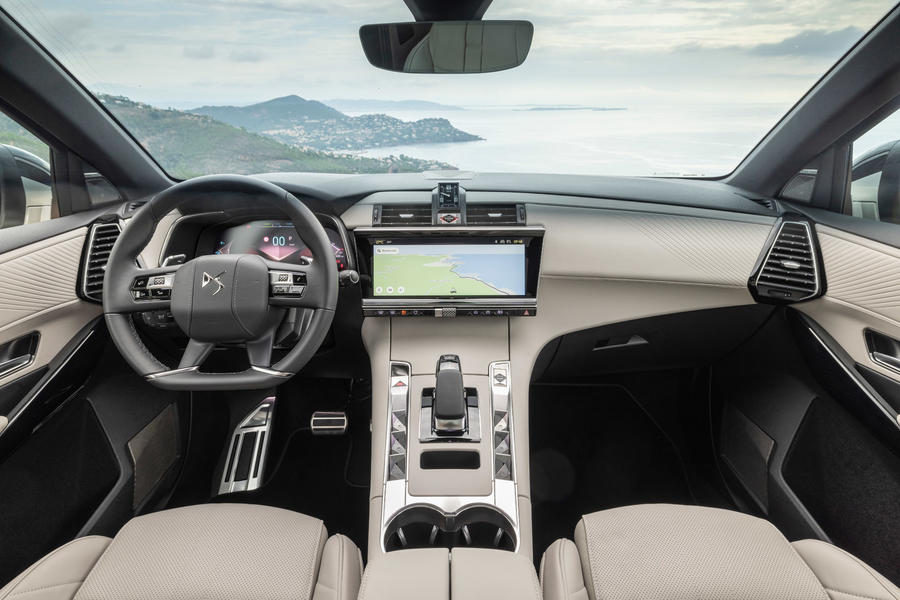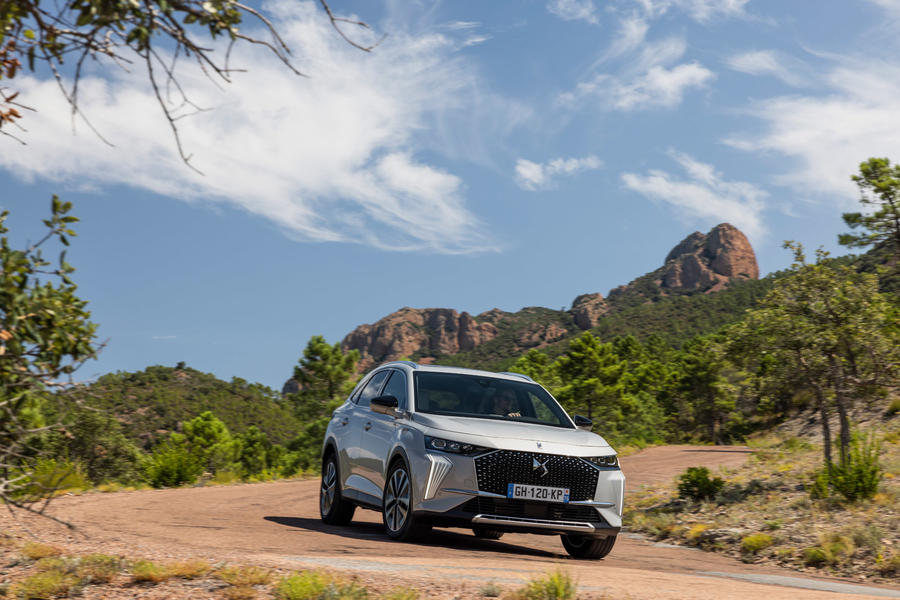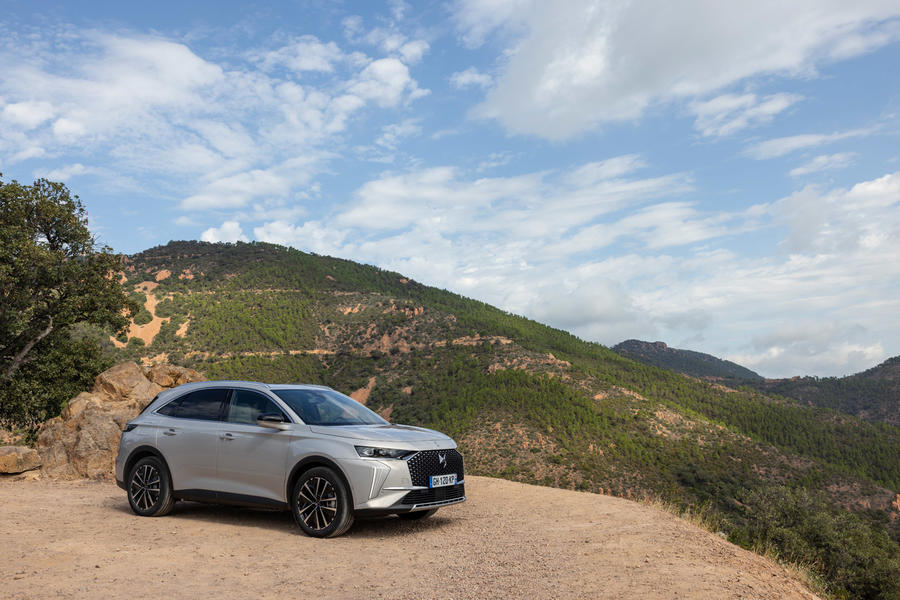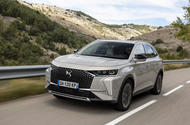Chic Audi Q5 rival gets a new look, tech boost and a powertrain shuffle – to what effect?
DS is steadily building and refining its model range to earn its place among the premium manufacturers. Now it has treated its most popular model, the DS 7 crossover SUV, to a mid-life update.
Some of the changes are standard facelift fare. More conventional LED matrix headlights replace the fancy swivelling items of the original. Meanwhile, the daytime running lights now tumble down the car’s front fascia in slivers: DS calls it the ‘light veil’. At the back, the lights have become slimmer and ‘DS Automobiles’ is now spelled out across the rear end. Very 2022.
The interior hardware stays mostly the same, but the DS 7 adopts the latest version of brand’s infotainment software on its 12.0in central touchscreen. We have already tried the ‘IRIS system’ as DS calls it, in the DS 4. It’s slick, responsive, customisable and, once you learn its quirks, pretty user-friendly. The only annoying thing is that DS cars don’t have separate controls for the climate, so those end up commandeering a portion of the screen.

The biggest change is to the powertrain line-up, which from now on will be dominated by the E-Tense plug-in hybrid options. The only non-electrified engine that remains is the 1.5-litre diesel, for those ultra-high-mileage drivers.
The front-wheel-drive E-Tense 225 and the four-wheel-drive E-Tense 300 (those numbers refer to the power outputs in PS) make a return and are joined by a new a range-topping performance model, the E-Tense 360.
The 360’s hardware is shared with the DS 9 E-Tense 360 and the Peugeot 508 PSE. It uses the same engine and motors as the 300: a 197bhp 1.6-litre petrol engine, assisted by a 107bhp electric motor in the gearbox and a 111bhp motor driving the rear axle. However, a different inverter allows the electric motors to deliver their power for longer, thus syncing up better with the petrol engine’s powerband and resulting in a higher system output.
The DS Performance division has also gone to town on the chassis, which is lowered by 15mm and gets a wider track – 24mm at the front, 10mm at the back. New 380mm front brakes and Michelin Pilot Sport 4S tyres keep the extra power in check.
At the facelifted car’s launch, we drove an E-Tense 225 and an E-Tense 360 and, as we found with the DS 9, less is most definitely more. With its additional 108bhp, the 360 does feel faster, but only when you’re near full throttle. In more relaxed driving, the added value of the range-topper is limited because the 225 hardly feels short of punch.
We’ve tried different variations of this powertrain in countless models and it’s adept at providing refined progress in a cruiser but gets flustered if you rush it. The result is that it doesn’t really feel at home in a performance derivative.
In general, the ‘lesser’ 225 just feels truer to DS’s mission of refinement and comfort thanks to its softer ride and slightly longer electric range. Even in its best spec, however, the DS 7 is quite hard to recommend, because it struggles to really convince in the area it should excel at: ride comfort.

The DS 7 always feels unsettled and slightly harsh over broken Tarmac, but also struggles to control body movements over large bumps. Meanwhile, the handling is secure but unremarkable. Combine the unresolved chassis with a powertrain that can have a mind of its own on occasion and you end up with a car that’s unsatisfying to drive.
Where the DS 7 comes into its own is on long motorway journeys. The interior materials are mostly pleasing and the seats are supportive, with a tall but comfortable driving position. The new infotainment system is a huge improvement, and thanks to laminated glass, the cabin remains quiet on the motorway, allowing the Focal audio system to shine. The DS 7 is somewhere between an Audi Q3 and Audi Q5 in size, but is reasonably roomy whichever segment you compare it with.
The price reflects that positioning to a degree. The E-Tense 225 starts from £44,190 in Performance Line trim, which represents reasonable value. The plusher leather interior that comes with Rivoli and Opera trim suits the DS 7 better, but that upgrade doesn’t come cheap, and neither do the separate options. Calculate with care if you’re tempted.
It’s not hard to see why you might be, but the underdeveloped chassis, so-so electric range and quickly escalating price make the DS 7 far from the obvious choice in the hybrid SUV class.

Source: Autocar
